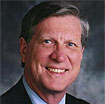Recently, significant challenges have been raised to the prevalent idea that narrative is the underlying and defining quality of human life.
For example, in a provocative essay making the rounds in university circles these days, “Against Narrativity,”1 Galen Strawson identifies–in order to attack them–two narrative theses that are currently popular in such fields as philosophy, theology, sociology, and psychology. In short, thesis 1 says that we need narrative to be human, and thesis 2 claims that we need narrative to be good. While conceding that these two theses are not necessarily intertwined–one could be false without implicating the other–Strawson believes that both are false. “There are,” he states, “deeply non-Narrative people and there are good ways to live that are deeply non-Narrative.”
Strawson’s argument is long, convoluted, and philosophically sophisticated, but the most interesting and compelling parts of it are personal and, in the way that Strawson would have us understand the word, autobiographical. He divides human beings into two broad tribes, Diachronics and Episodics. Diachronics are people who see themselves as living out narratives, who see themselves as having continuous “selves,” “something that was there in the past and will be there in the future.”2 (The Homiletical Plot was written for Diachronics–indeed it assumes that people are, by nature, Diachronics.) But contrary to the prevailing view that everybody is a Diachronic, Strawson insists that there are also the Episodics, a somewhat smaller group of people, but Strawson includes himself among them. An Episodic, he says, “does not figure oneself, considered as a self, as something that was there in the (further) past and will be there in the (further) future.” In other words, Episodics live completely in the present tense, with little or no regard for the past or the future. They in no way see themselves crafting or living out a narrative, and, Strawson, argues, they can be just as joyful, fulfilled, and ethical as anyone else.
So, some people, the so-called Diachronics, live narratively, and other people, the Episodics, do not. According to Strawson, both can be fully human; both can be stoutly ethical. In the early part of his essay, Strawson seems to argue for a world in which Diachronics and Episodics attempt the hard work of trying to understand each other and try to live in peaceful, if somewhat puzzled, coexistence. But as the essay proceeds to its conclusion, Strawson takes off the velvet gloves and throws a bare-knuckled punch or two at the Diachronics. He suggests that all attempts to narrate one’s life inevitably involve a measure of revisionism. We don’t really have access to the past, he argues, so we have to reconstruct it, which no one can do with flawless accuracy. He says, “The implication is plain: the more you recall, retell, narrate yourself, the further you risk moving away from accurate self-understanding, from the truth of your being.”3 If that sounds like a charge that Diachronics are inescapably living lies, well… “Some are constantly telling their daily experiences to others in a storying way, and with great gusto,” Strawson says. “They are drifting ever further off the truth.”4
Strawson saves his knockout punch, though, for those seemingly smug Diachronics, especially the religious ones, who claim that narrativity is crucial to ethical living. “I think,” he says, “that those who think this way are motivated by a sense of their own importance or significance that is absent in other human beings. Many of them, connectedly, have religious commitments. They are wrapped up in forms of religious belief that are–like almost all religious belief–really all about self.”5 OK, so much for peaceful coexistence.
Strawson’s views raise crucial questions for all narrative approaches to preaching, Lowry’s included. To begin, while Strawson has not persuaded me that the Episodic life is a parallel and equally valid way of organizing reality to narrative, he is nonetheless convincing that there are many people who experience life in a profoundly episodic fashion. People are making narrative sense out of their lives, but not everything in life is readily incorporated into this narrative. James L. Battersby, in an essay strongly critical of Strawson in which he challenges the sharp dichotomy Strawson wants to make between Diachronic and Episodic personalities, nevertheless acknowledges the veracity of the episodic impulse. He describes how a more balanced view of human life recognizes that these tendencies–diachronic and episodic–lie side by side in a single self. Even people who would be firmly on the diachronic side of the ledger nevertheless have a sneaking suspicion that the narrative understanding of human identity has its limits, that not everything in life can be digested narratively:
Ask me about me, my life, about what I’m doing, where I’m going, where I’ve been, what I’ve done, what it’s like being me, and I’ll tell you a story. And I’ll do so because I had a beginning, and ever since I can remember I’ve been on a journey, moving relentlessly forward; furthermore, even though I’ve undergone many changes in body and mind, it’s been me all along, and I’ll keep plugging along into the future until nature decides to pull the plug. On the other hand, what has kept the suspicion alive, though dormant, are the unshakeable, but unexpressed convictions that the whole story hasn’t been (and can’t be) told, that, indeed, the self is like mercury, not easily grasped, that life is fragmented into many stories and many pieces that are not narrative-like at all, that there are an indefinite number of ways of talking about what, for lack of a better term, we have developed the habit of calling the self…6
Second, Strawson’s argument may, coincidentally, raise an intriguing possibility about the larger cultural situation in which we find ourselves, the social moment into which we are summoned to preach. Now, admittedly, Strawson is writing about the self, about the inner experience of individuals. But could it be that he is also inadvertently describing the episodic character of the media-saturated, fragmented, storyless culture of affluent Westerners at the beginning of the twenty-first century? Strawson claims that he, and many others, are Episodic personalities. Whether or not that is true about individuals as types, it seems true about our society generally. What Strawson is describing may be less a property of selves and more a tendency in the larger society. We are under cultural pressure to live life in random bursts, our attention fleeting from American Idol to the troop movements in the Middle East to the desire to purchase a more powerful cell phone, a kind of cultural attention deficit disorder. This is what Neil Postman in Amusing Ourselves to Death called the “Now…This” phenomenon, as in television news when an anchor says, “Six children killed in an apartment fire. Now, Biff Sparkle with sports.” It is not that people don’t seek a unifying narrative of the self; it is rather that people lack the skills to construct one out of the shards and fragments of life.7
1Galen Strawson, “Against Narrativity,” Ratio (new series) 17, no. 4 (December 2004): 428–52.
2Ibid., 430.
3Ibid., 447.
4Ibid.
5Ibid., 437.
6James L. Battersby, “Narrativity, Self, and Self-Presentation,” Narrative 14, no. 1 (January, 2006): 37.
7Neil Postman, Amusing Ourselves to Death: Public Discourse in the Age of Show Business (New York: Penguin, 1986), chapter 7.
Excerpted with permission from: What’s the Shape of Narrative Preaching? (Copyright) 2008 Chalice Press.
Order What’s the Shape of Narrative Preaching? at 25% off from the Luther Seminary Bookstore.

